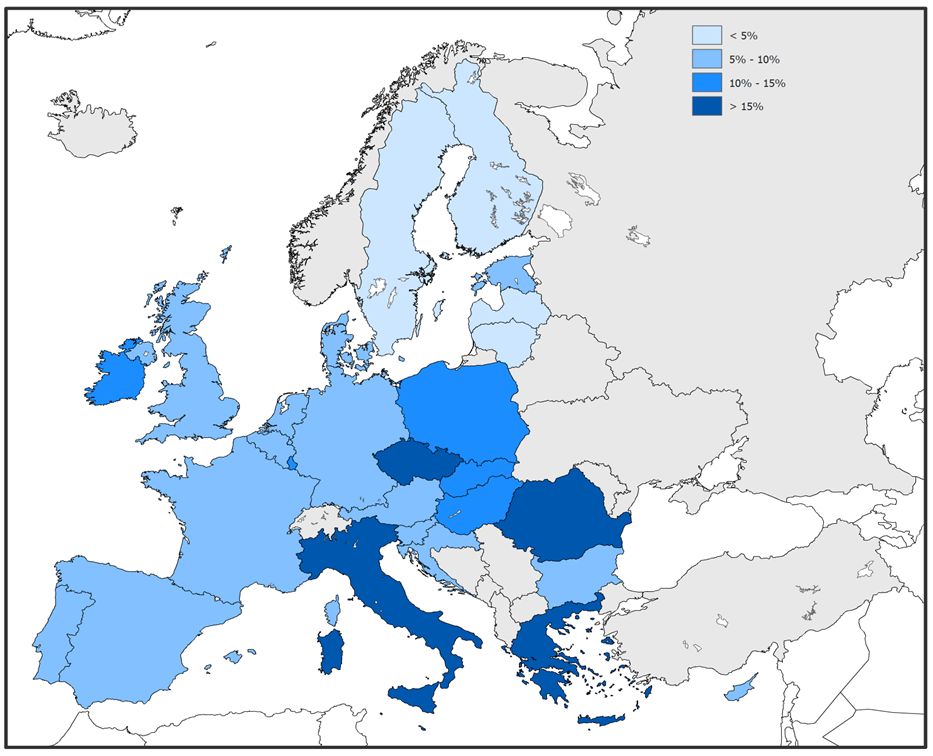
Blog post -
Closing the gender employment gap – an economic and social objective for Europe
In the following blog piece, Eurofound researchers Massimiliano Mascherini and Martina Bisello look at The Gender Employment Gap: Challenges and solutions report, and the collective responsibility to ensure that everyone in Europe has the freedom to participate in the labour market.
One of the common values that unite the European Union is that of equal opportunities: all citizens should have the same possibility to improve their lives, participate in the labour market and make progress in their careers – regardless of gender, ethnicity, religion and sexual orientation. Ensuring equal access to the labour market is an important objective for Europe in order to face the challenges posed by demographic change, achieve inclusive and sustainable growth, and meet EU 2020 targets.
Despite this, the reality is that the labour market in Europe is still far from being an even playing field. Notwithstanding considerable improvements in terms of women’s position in the labour market in recent decades, the employment and participation rates of women still remain consistently lower than those of men. While it is the case that the recent evolution of the labour market shows a convergence between female and male employment rates, this has largely been driven by a relative worsening of the male employment rate since 2008 and the decline of previously male-dominated industries such as construction and manufacturing.
According to the latest data from Eurostat, the gender employment gap in Europe in 2015 was equal to 10.4% – with just 60.4% of women aged 15-64 in employment, compared to 70.8% of men in the same age cohort. The graph below reflects the considerable heterogeneity between EU Member States in terms of the gender employment gap. However, behind this 10% differential lies the reality that over 17 million women would like to have a job but are unable to enter the labour market due to family or other responsibilities, or cannot secure a job under the right conditions or one that guarantees fair treatment.

Figure 1 - Gender Employment Gap in Europe - source Eurostat
Economic and social costs of inequality
Closing the gender employment gap should be an urgent economic and social objective.
According to The gender employment gap: Challenges and solutions report, taking into account foregone earnings, missed welfare contributions and additional public finance costs, the total yearly cost of the lower female employment rate is estimated to have been around €370 billion in 2013 – corresponding to 2.8% of the EU’s GDP. Moreover, the cost of a woman’s exclusion from employment throughout her working life is estimated to be between €1.2 million and €2 million, depending on her educational level.[1]
As shown in the second graph below, the costs associated with the gender employment gap at national level ranges from countries such as Lithuania and Sweden, where the cost of the gender employment gap corresponds to less than 1.5% of national GDP, to Greece, Italy and Malta, where the yearly cost is higher than 5% of GDP. In absolute terms, the highest loss due to the gender employment gap is shouldered by Italy, at €88 billion.

Figure 2 - Cost of the Gender Employment Gap as share of GDP, EU Member States- 2013- source: Eurofound.
The impact of the gender employment gap is not limited to economic loss – it also has significant social effects. Employment can improve an individual’s perception of their overall quality of life, and this in turn contributes to social cohesion. Women in employment are shown to be more empowered and to evaluate their lives more positively than those outside the labour market. In this regard, paid employment not only ensures economic independence and acts as a shield against poverty and deprivation; it also contributes significantly to the greater inclusion of individuals in society.
The freedom to work
The figures highlighted by the gender employment gap report clearly show that the persistence of unequal employment opportunities between men and women in Europe should be a high policy priority, since improvements could lead both to a fairer society and to substantial macroeconomic gains.
Despite the initiatives launched by the European Commission in order to foster the labour market participation of women, it is clear that the EU will not meet its target on female participation in the coming years. For this reason, a renewed and additional effort is urgently needed at EU and Member State level, as if progress continues at the current rate, it would still take several decades in many Member States to achieve EU targets and to eventually close the gender employment gap.
Best practices from EU Member States that have been successful in reducing the gender employment gap reveal that effective policy initiatives aimed at increasing women’s (re)integration into the workforce go beyond traditional labour market policies and include integrated measures related to adult and childcare support, paid parental and adult-care leave, and flexible working arrangements. While integrated policies are essential in order to achieve significant and effective results, in many Member States, what is urgently needed is a gradual cultural shift aimed at eliminating gender stereotypes and fostering the shared and more equal division of family responsibilities.
While the decision on whether or not to participate in the labour market belongs only to women at an individual level, providing equal opportunities in order to ensure that this choice can be freely taken should be the common objective of every government in line with EU values.
Click here to read The gender employment gap: Challenges and solutions report in full
[1] These figures do not include an estimation for the economic contribution of women not active in the labour market


